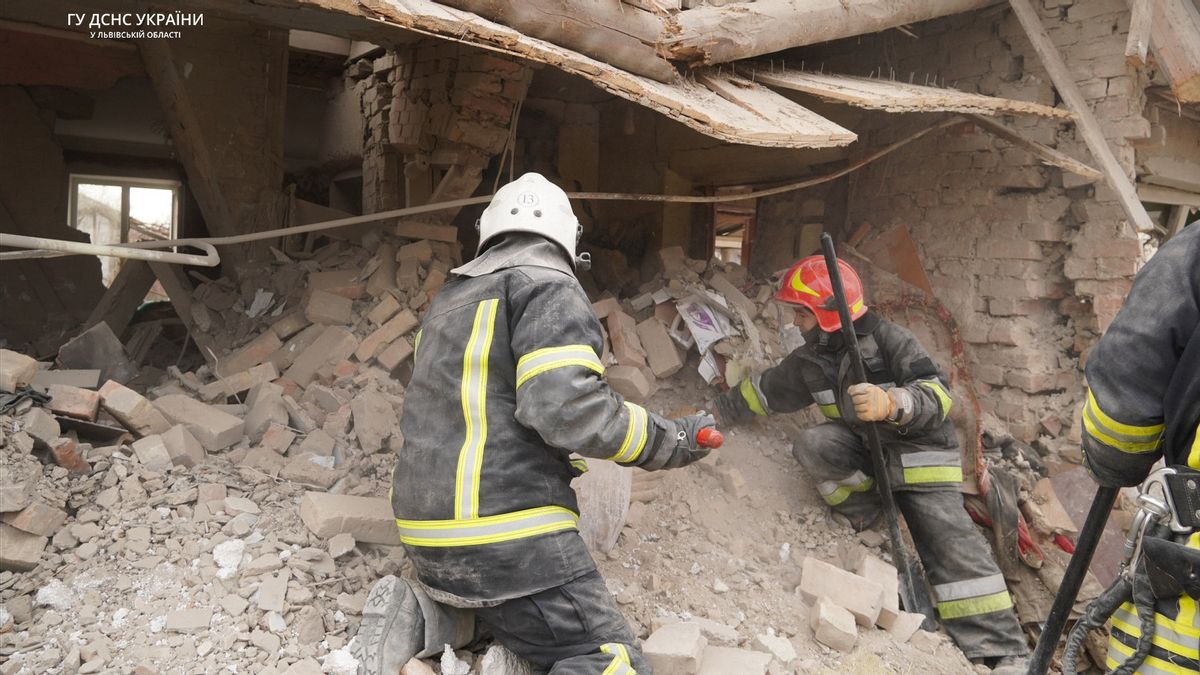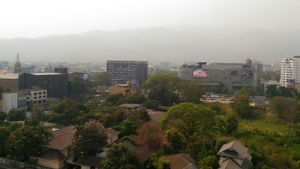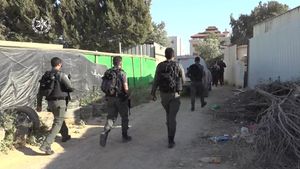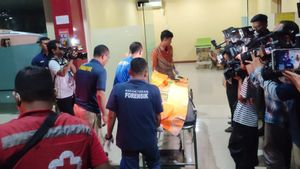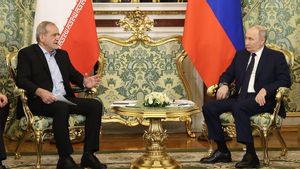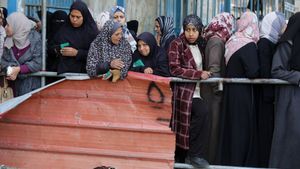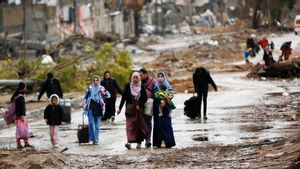JAKARTA - At least nineg civilians were killed and electricity was cut off, when a wave of Russian missiles hit Ukraine on Thursday, including six kinzhal hypersonic cruise missiles according to Kyiv, one of Moscow's flagship weapons.
This was the first wave of attacks on rear targets, away from the battlefield, since mid-February.
The attack this time also forced Europe's largest nuclear power plant Zaporizhzhia to be unable to operate.
"The occupiers can only terrorize civilians. That's all they can do. But it will not help them. They will not avoid responsibility for everything they have done," condemned Ukrainian President Volodymyr Zelensky, describing the attacks that hit infrastructure and buildings. residences in ten regions, launched Reuters March 10.
Villagers in Zolochiv in Ukraine's western Lviv region carry a body in a black plastic bag over the rubble of a brick house that was completely destroyed by the missile. They put the body into the back of the white van with the others. A dog lay curled up on a carpet in the rubble.
Oksana Ostapenko said the house belonged to her sister Halyna, whose body is still buried under the rubble with two other family members.
"They still haven't found him. We hope they are alive. But they are not," he said.

Another civilian was reportedly killed by a missile in the central Dnipro region. Three civilians were separately reported killed by artillery in Kherson.
Moscow says such attacks are meant to reduce Ukraine's ability to wage war. Kyiv, meanwhile, said the airstrikes had no military purpose and were aimed at harming and intimidating civilians, a war crime.
In the capital Kyiv, the seven-hour all-night warning was the longest of Russia's five-month air campaign.
"I heard a very loud, very loud explosion. We immediately jumped out of bed and saw one car on fire. Then another car caught fire. Balcony glass and windows shattered," said Liudmyla, 58, holding a toddler in her arms on the street Kyiv near the broken car.
"The child was frightened and jumped out of bed. How can they do this? How is it possible? They are not human," he asked.
Separately, Russia's Defense Ministry said it had carried out a "massive counteroffensive" in retaliation for last week's cross-border incursion. The attack is claimed to have hit all of its intended targets, destroying drone bases, disrupting railroad lines and damaging facilities that make and repair weapons.
Moscow confirmed it had used a hypersonic missile in Thursday's attack. Ukrainian officials said it was the first time they had encountered so many guns, which the Ukrainians were unable to shoot down.
Meanwhile, the White House said the barrage was "devastating" to watch, insisting Washington would continue to provide Ukraine with an air defense capability.
VOIR éGALEMENT:
Russia is believed to have only a few dozen Kinzhals, which fly many times faster than the speed of sound and were built to carry nuclear warheads with a range of more than 2.000 km (1.200 miles). In his speeches, President Vladimir Putin regularly extols the Kinzhal as a weapon that the NATO alliance backing Kyiv cannot intercept.
Ukraine says the attack knocked out power everywhere, including to the Zaporizhzhia nuclear power plant, Europe's largest, disconnecting it from the grid and forcing it to use emergency diesel power to prevent damage. However, it was recently successfully reconnected to the Ukrainian energy grid, said operator Ukrenergo.
It is known, officials said the attacks this time hit Kyiv, the Black Sea port of Odesa to Kharkiv. Targets stretch from Zhytomyr, Vynnytsia and Rivne in the west to the Dnipro and Poltava in central Ukraine.
The English, Chinese, Japanese, Arabic, and French versions are automatically generated by the AI. So there may still be inaccuracies in translating, please always see Indonesian as our main language. (system supported by DigitalSiber.id)
